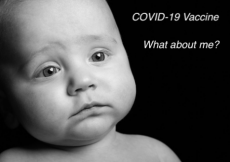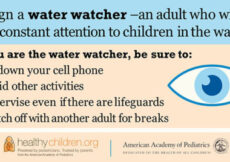May 10th, 2022
May is Mental Health Awareness Month
Among young Americans 10-24 years of age, suicide is the second-leading cause of death behind unintentional injuries. Researchers from the Centers for Disease Control and Prevention reported last month that the pandemic has increased the risk of suicide even more, especially among teenagers:
Among adolescents aged 12–17 years, mean weekly number of ED visits for suspected suicide attempts were 22.3% higher during summer 2020 and 39.1% higher during winter 2021 than during the corresponding periods in 2019, with a more pronounced increase among females.
Marcus A. Banks reports on the alarming 20-year trend of despair in American pre-teens that has only gotten worse during the pandemic:
Suicide attempts spurring calls to poison control centers more than quadrupled among U.S. children aged 10-12 years from 2000 to 2020, according to research published in JAMA Pediatrics.
The reasons for the increase in suicide attempts isn’t clear from the new study, but the researchers note that popular social media networks launched during the 20-year period, and other studies have linked spending time on social media with depression in adolescence. The COVID-19 pandemic, which began in the last year the researchers looked at, also disrupted normal life and routines for children.
More than 1.1 million adolescents and preadolescents visit pediatric emergency departments each year in the U.S. for suicidal thoughts and behaviors — a number that has doubled in the last decade:
“It’s a huge problem we’re seeing in [ERs]. It’s exponentially blowing up numbers across the nation,” says David Sheridan, MD, an ER pediatric doctor at the Oregon Health and Science University, Portland, who led the study.
“It’s really tough on the entire health care system, and most importantly, it’s really rough on the families who are going through a crisis,” Dr. Sheridan says. He noted that young people often attempt suicide by taking excessive quantities of common over-the-counter products found in many medicine cabinets – acetaminophen, ibuprofen, diphenhydramine – not items marked “poison.”
Because of this new data, the American Academy of Pediatrics urges universal screening of all adolescents for anxiety, depression, and suicide risk. Melissa Jenco says doctors and parents don’t know the extent of a person’s psychological despair unless they ask the uncomfortable question:
“Youth may keep suicidal thoughts to themselves and will not bring up the topic unless directly asked,” said May Lau, M.D., M.P.H., FSAHM, FAAP, a member of the AAP Section on Adolescent Health Executive Committee and a lead author of the Blueprint for Youth Suicide Prevention. “By screening all youth for suicide, we can identify those that are at risk and connect them with the services they need.”
Psychiatrist Drew Ramsey suggests the direct approach when probing loved ones for clues about suicidal thoughts:
Researchers John Mann, MD and Maria Oquendo, MD, developed the Columbia-Suicide Severity Rating Scale, which starts with two questions [that] most effectively screen for suicide: “Have you wished you were dead or wished you could go to sleep and not wake up?” and “Have you actually had any thoughts of killing yourself?”
Psychologist Betsy Kennard says signs of suicidal thoughts in teenagers can be missed because some are simply attributed to normal adolescent behavior:
There are several signs that may indicate suicide risk, including the following behaviors:
• Depressed mood/mood disorders
• Difficulty regulating emotions
• Difficulty with problem solving
• Hopelessness
• Impulsivity
• Hostility and aggression
• Quitting or struggling to enjoy favorite activities
• Social or interpersonal problems, interpersonal skill deficits
• High situational stress
• Insomnia
Compared to females who tend to use less lethal means (such as ingesting pills) to carry out their suicide attempts, boys and adult men are often more successful in carrying out their suicide plans, especially when a gun is involved. LGBT youth and young people with substance abuse problems are also at risk.
There are many known risk factors of suicidal behavior in teens, which include:
• Abuse, neglect, or trauma at home
• Depression or another mood disorder
• Family or social relationship with someone who attempted suicide or died by suicide
• Insomnia or other sleep disturbances
• Parents with psychiatric conditions, genetically
• Problems with drug or alcohol abuse
• Self-harm (cutting, for example)
• Situational stress at home or at school, including face-to-face or cyberbullying
The presence in the home of firearms, prescription pain medicines, and illicit drugs all increase the risk of suicide.
In addition to risk factors, there are also protective factors for teens at risk for suicide:
Researchers have identified several areas in which teens’ friends, parents, and adult mentors can positively impact or protect against the risk of suicide.
• Protective factors can include having:
• A circle of friends who are positive and supportive
• Personal goals and purpose, such as participation in art, sports, extracurricular activities, volunteering, or a part-time job
• Positive family connections
• Religious or spiritual connections
• Success at school
Dr. Kennard urges parents to be alert to signs and symptoms that can increase their teenager’s risk of suicide, and to have those uncomfortable conversations with them:
Please don’t be afraid to discuss mental health with your teens. Ask the uncomfortable questions. Have the tough conversations. Get help from a doctor when you feel in your gut that you should. Doing so might save a teen’s life.
National Suicide Prevention Lifeline
(24/7 — All calls confidential)
1-800-273-8255 (TALK)
Beginning on July 16, 2022, simply dial 988




































